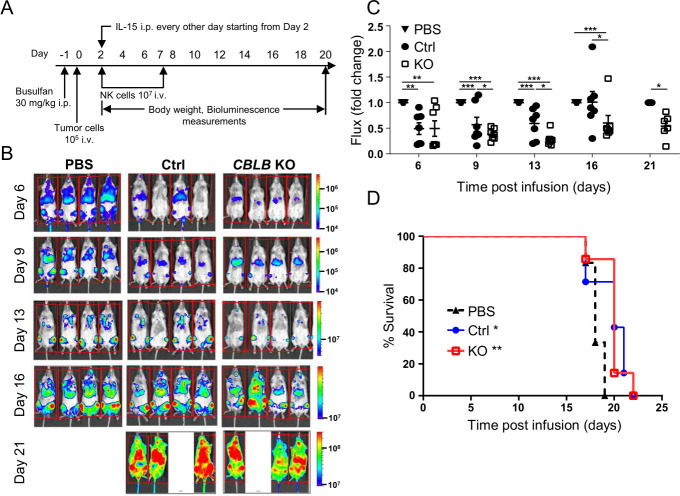Figure 4.
CBLB KO PNK cells reduce tumor burden in vivo. (A) Schematic of experimental procedures for the evaluation of antitumor activity of Ctrl or CBLB KO PNK cells in vivo using HL-60 xenograft mouse model (n=6–7). One day after busulfan treatment, 1×105 HL-60 cells expressing luciferase were injected intravenously to NSG mice and NK cells were injected on days 2 and 7 post-tumor cell injection to three randomized animal groups (PBS, Ctrl PNK or CBLB KO PNK cells). Each animal received 1×107 cells. rhIL-15 was administered intraperitoneally every 2 days until day 20. (B) Representative bioluminescence imaging of each group shows the tumor burden at days 6, 9, 13, 16 and 20. All animals were sacrificed at day 21. (C) Tumor burden of each group normalized to PBS Ctrl group as tumor growth fold change. (D) Survival plot of the HL-60 xenograft mouse administered with PBS, Ctrl or CBLB KO PNK cells. Asterisks (*) indicate significant difference between Ctrl and KO groups compared with the PBS group. *P<0.05, **P<0.01, ***P<0.001. CBLB, Casitas B-lineage lymphoma pro-oncogene-b; Ctrl, control; IL, interleukin; KO, knockout; NK, natural killer; NSG, NOD-scid IL2R gammanull; PBS, phosphate-buffered saline; PNK, placental CD34+ cell-derived NK; rh, recombinant human.

